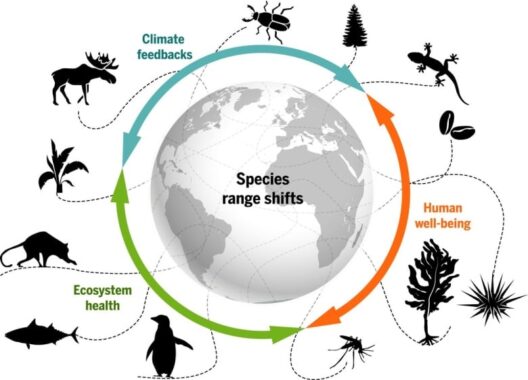Asia, the largest continent, is a tapestry of climatic diversity, shaped by an interplay of geographical features, seasonal patterns, and human activity. From arid deserts to lush rainforests, and from mountainous terrains to sprawling megacities, the climate in Asia tells a complex story, especially when focusing on the phenomena of monsoons, the towering mountains, and the bustling urban centers.
One of the most defining climatic features of Asia is the monsoon. This annual wind pattern brings a significant change in precipitation, serving as a lifeline for agriculture and water supply in numerous regions. The Indian subcontinent, Southeast Asia, and parts of East Asia experience the south-western monsoon from June to September. The onset of the monsoon varies, with some areas receiving rain as early as May and others much later in the season. This variability is crucial, as regions like India rely heavily on this seasonal rainfall for crops. Monsoon rains can transform arid landscapes into fertile fields, but they can also lead to devastating floods. Understanding this dual nature of monsoons cultivates a perspective that juxtaposes the promise of agriculture against the threat of natural disasters.
Conversely, in Northern Asia, specifically Siberia, a different climatic regime prevails. Here, harsh winters dominate, with temperatures plummeting to record lows. The Siberian climate is characterized by significant seasonal variance, deficient in moisture and rich in stark beauty. The permafrost that develops in this region poses unique challenges, affecting not only natural ecosystems but also human infrastructure. As climate change introduces unpredictability, the impacts of thawing permafrost become increasingly critical. The juxtaposition of the frigid North with the verdant South emphasizes the vast climatic spectrum present within Asia.
Mountains also play a pivotal role in the continent’s climate dynamics. The Himalayas, the tallest mountain range in the world, serve as a formidable barrier, profoundly affecting weather patterns. They intercept the moisture-laden winds that rise from the Indian Ocean, precipitating heavy rainfall on their southern slopes. This rain feeds the rivers that sustain millions, yet it also engenders challenges, including glacial melting and potential water shortages in the future. The high-altitude regions experience severe weather, with temperatures dropping drastically and conditions shifting rapidly. Such extreme climatic influences provoke curiosity regarding how ecosystems adapt to such harsh environments. The fragility of these mountain ecosystems is a stark reminder of the interconnectivity of climate systems.
The interplay of mountains and humidity extends to other regions in Asia as well. The Western Ghats and the Eastern Himalayas, both UNESCO World Heritage sites, are unparalleled in biodiversity. These spots epitomize the intricate relationship between climate and ecology. The forests here, cloaked in mist and rain, are teeming with endemic species. As climate change accelerates, however, these forests must contend with the encroaching pressures of urbanization and agriculture. This disposition of habitats presents a dual challenge: the preservation of biodiversity alongside the need for sustainable development.
Urbanization in Asia is characterized by the rapid growth of megacities, such as Tokyo, Delhi, and Shanghai. These colossal urban centers create their microclimates. The phenomenon of urban heat islands leads to temperatures that can be several degrees higher than surrounding areas. The convergence of high population density, pollution, and limited green spaces creates an environment fraught with challenges for air quality, public health, and energy consumption. The balance between urban development and environmental sustainability is precarious. This urgency compels stakeholders at all levels to innovate and implement strategies for climate resilience.
While the promise of technology presents potential solutions—be it through green architecture, renewable energy sources, or advanced public transportation systems—the questions surrounding efficiency and equitable access persist. As cities grapple with the dichotomy of expansion and sustainability, the challenge remains: How can these urban giants adapt to changing climate patterns while ensuring the well-being of their inhabitants?
While agriculture, urbanization, and ecological integrity must navigate their complexities, the impact of climate change looms over Asia. Increasingly erratic weather patterns, elevated temperatures, and rising sea levels forecast a future that demands adaptability. For coastal cities, the threat of flooding from rising seas is imminent. Coastal defenses, though vital, cannot entirely thwart nature’s advances. Similarly, the agrarian regions face the paradox of drought and flooding, necessitating innovative agricultural practices that can withstand these variations.
The convergence of these dynamics is stark. The lessons drawn from the climate in Asia compel a broader reevaluation of how societies interact with their environments. As residents of this vibrant continent undergo the blessings and challenges posed by diverse climates, a shift in perspective emerges. Understanding the climate not merely as a backdrop but as an active influencer redefines our relationship with nature. This perspective shift is fundamental, compelling action towards sustainability and resilience across the continent.
In conclusion, the climate of Asia serves as both a vital resource and a formidable challenge. Monsoons, mountains, and megacities encapsulate the continent’s climate variability. Acknowledging this diversity fosters an appreciation for the intricate balance required for human and ecological survival. The future awaits those willing to adapt, innovate, and protect the intricate web of life that is so crucial to the continent’s vitality.








